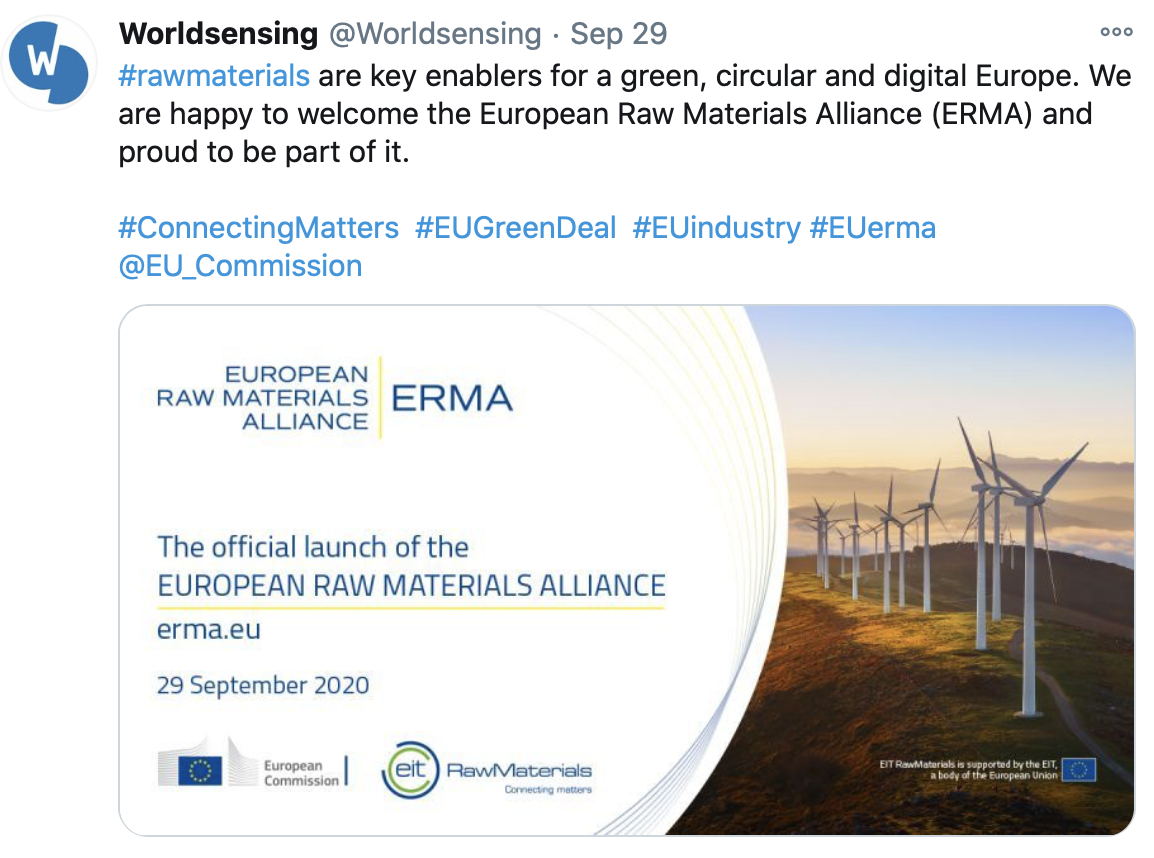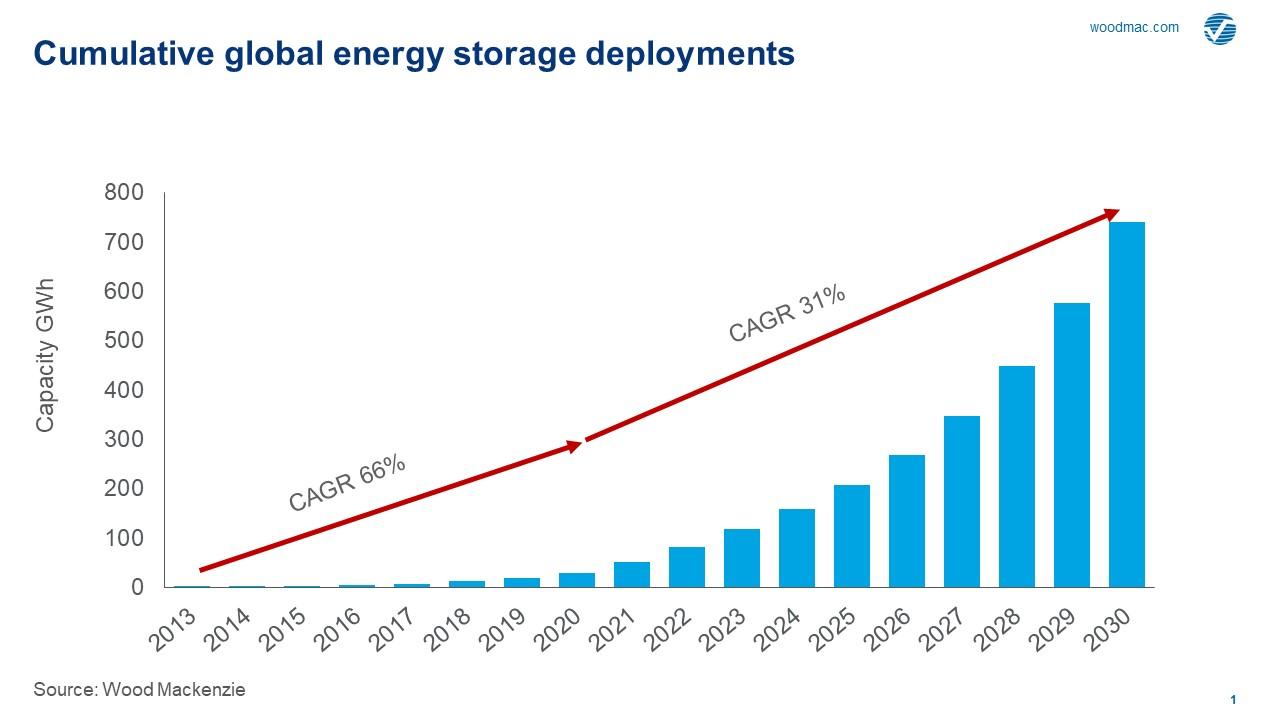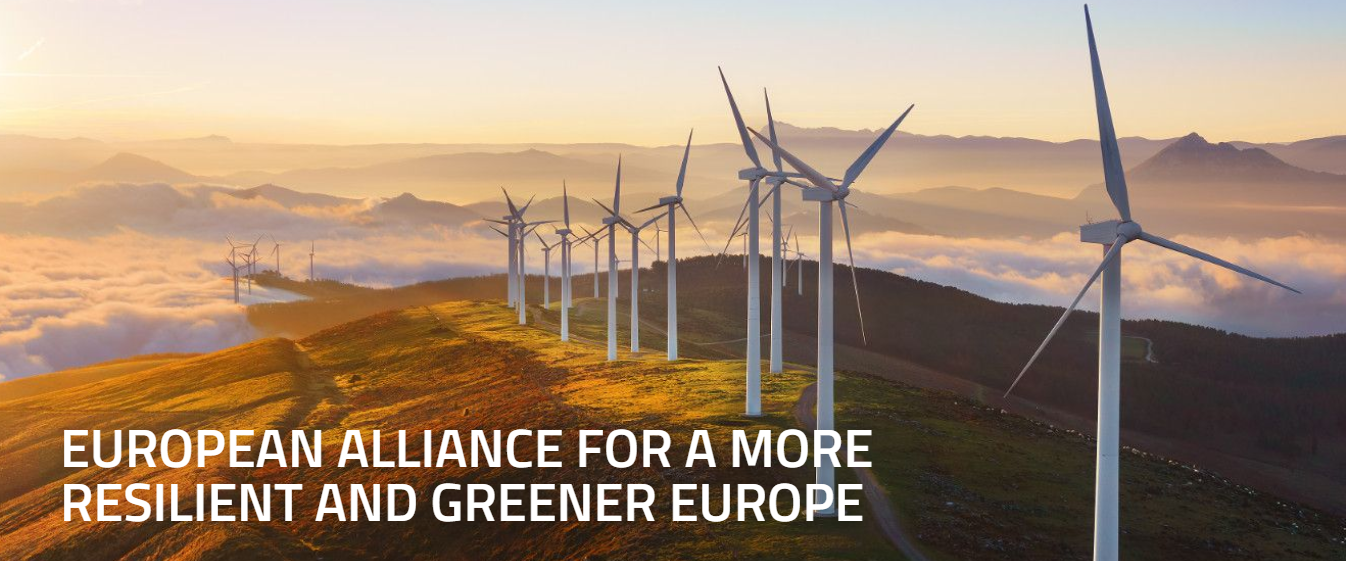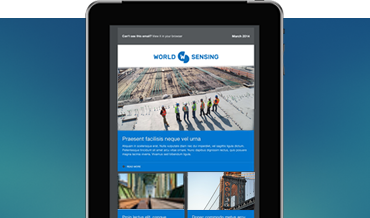Why we see endorsement of ERMA as a big deal for Europe and mining
September 2020 saw the low-key launch of a body called the European Raw Materials Alliance (ERMA). As a company with deep links to the global mining industry, at Worldsensing we were quick to add our name to the ERMA partner network. Nothing remarkable about that, you might think. But think again. Our commitment to ERMA isn’t just a gesture of solidarity with an industry that we are already closely aligned to. In our view, it’s part of a movement that is key to the future of mining—and Europe.
It’s also something close to our hearts. At Worldsensing, we seek to transform assets into climate-resilient critical infrastructure. Our mission is to keep people safe by providing customers, partners and our ecosystem with technology that empowers them to anticipate events and make smarter decisions to prevent disasters.
To understand why ERMA is such a big deal, you first need to know about the role that raw materials are playing in one of the greatest transformations in modern times. It’s no secret that our global economy is powered almost entirely on fossil fuels, from the petrol that goes into our cars to the coal that is burnt in our power plants. It’s also no secret that we need to move away from these energy sources, fast.

Even if global warming was not forcing our hand, the fact is that fossil fuels are in limited supply. The world’s coal supplies will likely start running out within five years and oil and gas could get scarcer from 2050. Spurred on by the negative impacts of climate change, most governments are sensibly trying to break away from fossil fuels even earlier. Thus, we are seeing increasingly ambitious clean energy targets, not just from administrations but also from the private sector.
The society of tomorrow, we now know, will be powered by solar panels and wind turbines, and will move around using electric vehicles rather than gas-guzzling cars. But what many people may not realise is that this transition will require a massive investment in raw materials mining, just as the previous economy has required the wholesale extraction of fossil fuels.
Wind turbines, for instance, are predominantly made of steel and iron but also require significant amounts of copper and aluminium. Turbines that use direct-drive generators also need rare earth elements such as dysprosium, neodymium and praseodymium. But the requirements of the wind sector are minor compared to the forecast supplies needed for lithium-ion batteries.
Originally mass produced for (and still used in) consumer electronics devices such as mobile phones and laptops, lithium-ion batteries are now being used in huge quantities to store solar energy in homes and for enormous battery systems connected to the grid. More importantly, lithium-ion batteries are also key to the development of electric vehicles. The batteries require a mix of materials, including cobalt, graphite, lithium and nickel, some of which can pose supply chain problems.

Three quarters of the world’s cobalt supply, for example, is expected to come from the Democratic Republic of Congo (DRC) by next year. Relying on any single nation for such a level of supply would be risky. And in the case of the DRC, the risk is amplified by a longstanding armed conflict that has only just ended this year. Such factors have led to concern that the energy transition could be imperilled by raw materials supply constraints.
Supply bottlenecks are of particular concern to European policymakers. Europe has led the way in the early part of the energy transition, creating major renewables markets and birthing the world’s top wind turbine manufacturers. But battery manufacturing is being led by companies in Asian countries such as China and South Korea.
European Union lawmakers have realised they need to foster a homegrown battery industry, or the block could lose its grip on the strategically important automotive sector. This, then, is the backdrop against which European Union Commissioner Thierry Breton and Vice President Maroš Šefčovič launched ERMA last month.
Helping to achieve green deal targets
In helping to shore up raw materials supply chains, the Alliance will not only help Europe achieve its climate goals and green deal targets, but also ensure the Union remains competitive in key industrial sectors such as automotive and energy. That’s not all, either. Raw materials are sourced from a range of global markets, and while the mining industry generally is making great strides in improving workforce practices there are still concerns in certain jurisdictions.
Cobalt is a case in point: demand for the metal is expected to grow four times by 2030, but at present up to 30% of the mining that happens in DRC is via artisanal or small-scale mines where there is little control over environmental or safety standards. The situation is unlikely to change much unless there is pressure to do so from higher up the procurement chain. And European manufacturing companies, which are subject to some of the most stringent safety and environmental standards in the world, could prove a catalyst.
Hence, we believe ERMA could be a major force for good within the mining industry, helping to spread the adoption of best practices. This is something we are already strongly committed to.
Building on previous collaborations
And we are already collaborating with bodies such as the European Union and the European Investment Bank to improve safety in infrastructure projects. Specifically related to raw materials, our association with ERMA follows our involvement in Europe’s AMICOS project on autonomous monitoring and control system for mining plants and the illuMINEation scheme to advance risk reduction and resilience in mines.
Becoming part of ERMA and contributing to Europe’s sustainability goals is not only a commitment to building a planet-friendly company, but also a clear statement of our willingness to impact and to contribute to more sustainable human development. In practice, this means that we will work to contribute towards Europe’s Green Deal goals in all our areas of activity—not just mining, but also construction, rail and more.
Internally, we will continue to prioritise environmental compliance and do whatever we can to help build a better and stronger world, offering solutions that help to create more sustainable and resilient mining and construction operations. There’s a lot riding on getting it right.

